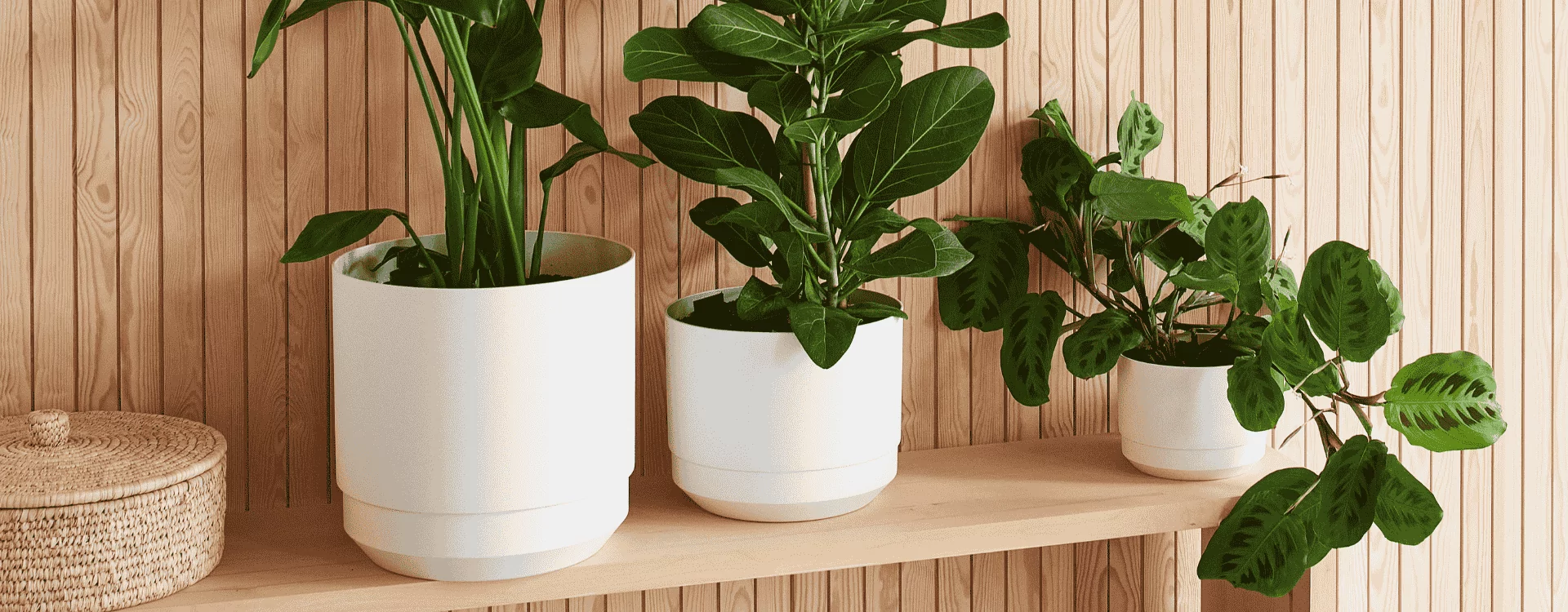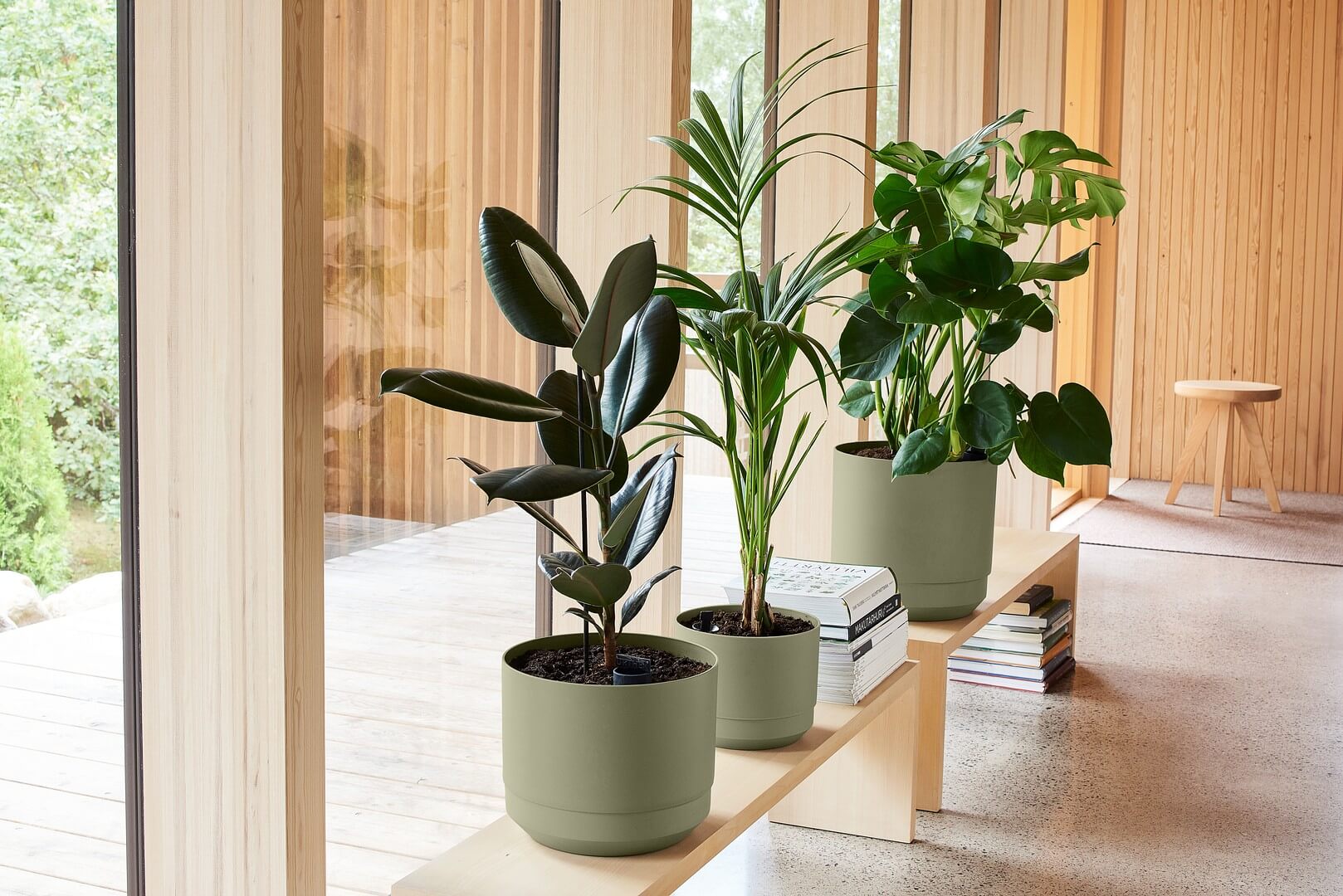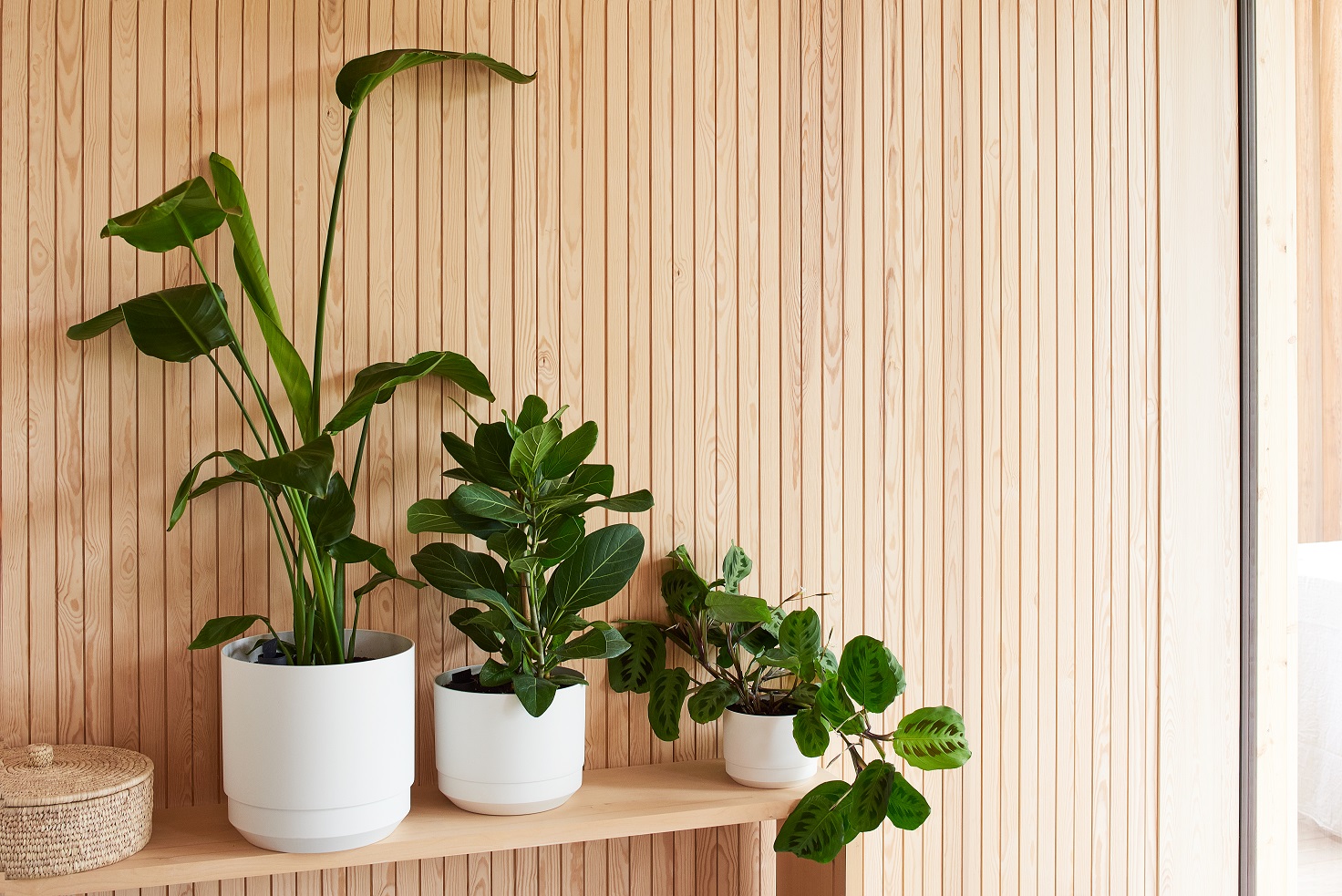Remember the light
Choose where to put plants according to their need for light. Plants with thick and coloured leaves or flowers need more light.
Water the right amount
Plants with large leaves and flowers need more water than plants with sticky leaves and cactuses. Water them well and then let the soil dry a bit – you can get some plants to flower in this way! Use room temperature water.
Spray the leaves
You can spray the leaves daily with clean water. This increases the humidity of the air, and the plants will stay better. Note that plants with sticky leaves don't need spraying.
Use fertilizer
Fertilize plants regularly, but only in the growing season. Most plants start to grow in March and the growth ends in October or November. Whitening or diminishing leaves are a tell-tale sign that the plants need nutrients.
Utilize self-watering pots
Self-watering pots are good for plants that require even watering. They make it super easy for you: the plants will suck the water they need from the pot's container. The measuring stick will tell you when to water.
Change the soil
Usually, the soil needs to be changed every 3 to 5 years, soil for smaller plants needs to be changed more frequently.
Did you know that some plants make the air better?
Some plants make the air cleaner and more humid. For example, spider plants, dragon trees, snake plants, dumb canes and weeping figs clean impurities from the air. Palm plants, rubber figs, ferns, devil's ivies and dragon trees add humidity.
Allergy alert!
Some plants may irritate people with allergies. These include weeping fig, dragon tree, Chinese hibiscus, rubber fig, chrysanthemum, and gerbera. Also, if you have small children or pets, make sure that you choose plants that are not poisonous.

 Rangement
Rangement  Cuisine
Cuisine  Maison et jardin
Maison et jardin  Entretien des plantes
Entretien des plantes 
 Rangement
Rangement  Cuisine
Cuisine  Maison et jardin
Maison et jardin  Entretien des plantes
Entretien des plantes 

